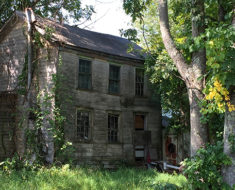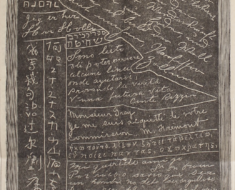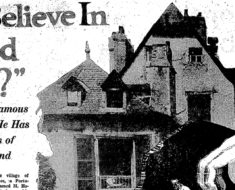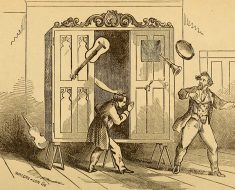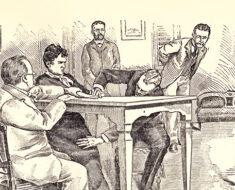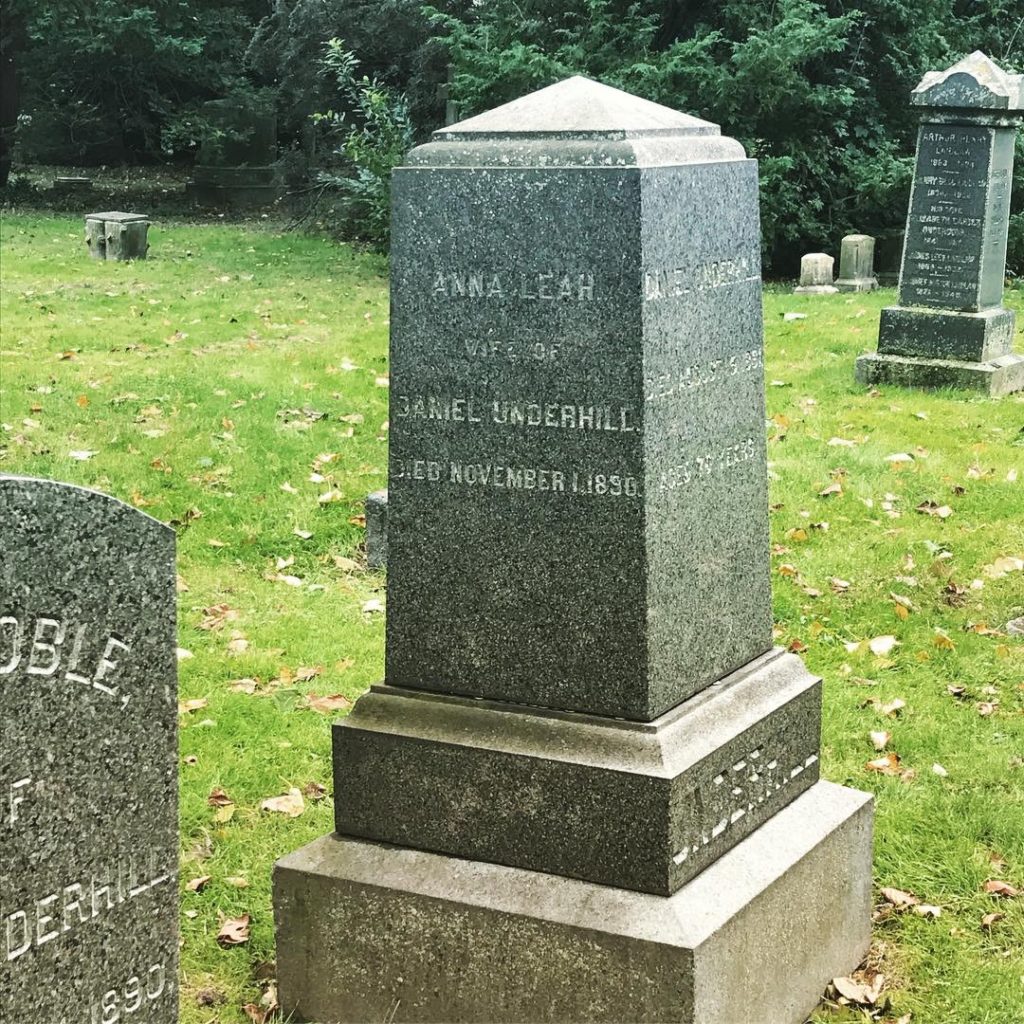
The grave of Leah Underhill, nee Fox. Sister and manager of Spiritualists Maggie and Kate Fox. Photo by Marc Hartzman.
A stroll through Brooklyn’s Green-Wood Cemetery is a wonderfully creepy way to spend a crisp October afternoon. Especially when you feel the presence of a few ghosts. And if you’re on a walking tour with Andrea Janes from Boroughs of the Dead, she’ll make sure you do.
The “Spiritualists of Green-Wood Cemetery” walk visits the graves of various mediums, believers, and magicians, including the Leah Fox, sister and manager of Kate and Maggie Fox. With a series of spooky knocks and raps on tables, the Fox sisters invented Spiritualism in their Hydesville, New York, home in 1848 after convincing anyone who would listen that they could communicate with the dead.
Kate and Maggie were just twelve and fifteen years old at the time, respectively. People loved the hope they offered and a new religion spread. After all, who wouldn’t want to speak with their lost loved ones?
As Janes leads the way to a group of Civil War graves, she explains how the tremendous number of casualties during the conflict added to Spiritualism’s growth, as grieving family members sought comfort from connecting with the dead. Seizing the opportunity, mediums popped up all across America, capitalizing on widespread sadness and natural curiosity.
“The entire cemetery itself is the perfect backdrop to discuss Spiritualism,” she told Weird Historian. “Its opening was more or less concurrent with the movement’s beginnings in 1848 (the cemetery opened in 1845) and because, as a resurrectionist cemetery, it too embraces the idea of a beautiful, hopeful, positive—as opposed to a strictly mournful—death. This is a cemetery filled with exuberant angels pointing heavenward, not grim death’s heads.”
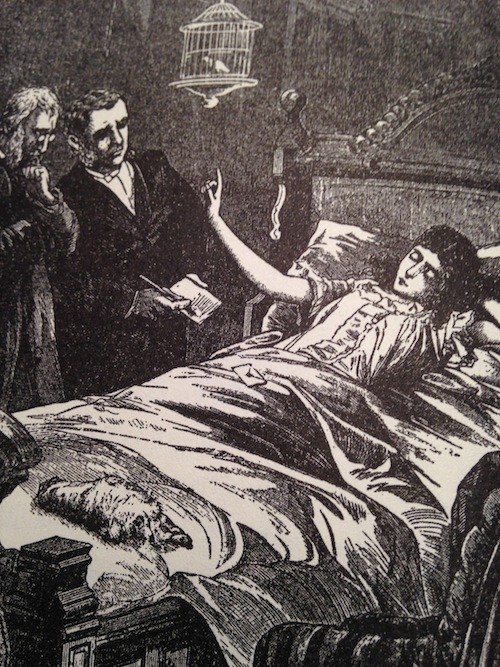
Spiritualist Mollie Fancher was bedridden for fifty years.
Mollie Fancher used to be listed on cemetery maps as “the Brooklyn Enigma” on old cemetery maps. As Janes tells her story, you’ll learn why. Fancher’s enigmatic ways came as result of a series of tragedies starting in 1864 at the age of 16. She was badly injured after being thrown from a horse, and just a year later suffered another accident from a trolley car, damaging her spine. Soon after, she collapsed on her kitchen floor and was carried to her bed. She stayed there for the next fifty years.
During that time, Fancher barely ate or drank, which may have helped her fall into psychic trances. Once asleep, see allegedly saw things others couldn’t—an especially impressive feat given she was also blind.
“While in a trance, when her mind often roves here and there, sometimes to distant places, she sees persons whom she recognizes, afterward telling them where she saw them, under what circumstances and what they were doing,” a newspaper reported in 1897. “This she has done when the persons were many miles away and Miss Fancher ignorant of where they were.”
People flocked to her home for psychic readings. She became so popular that P.T. Barnum paid her a visit, hoping to entice her to join him on a tour. Fancher declined.
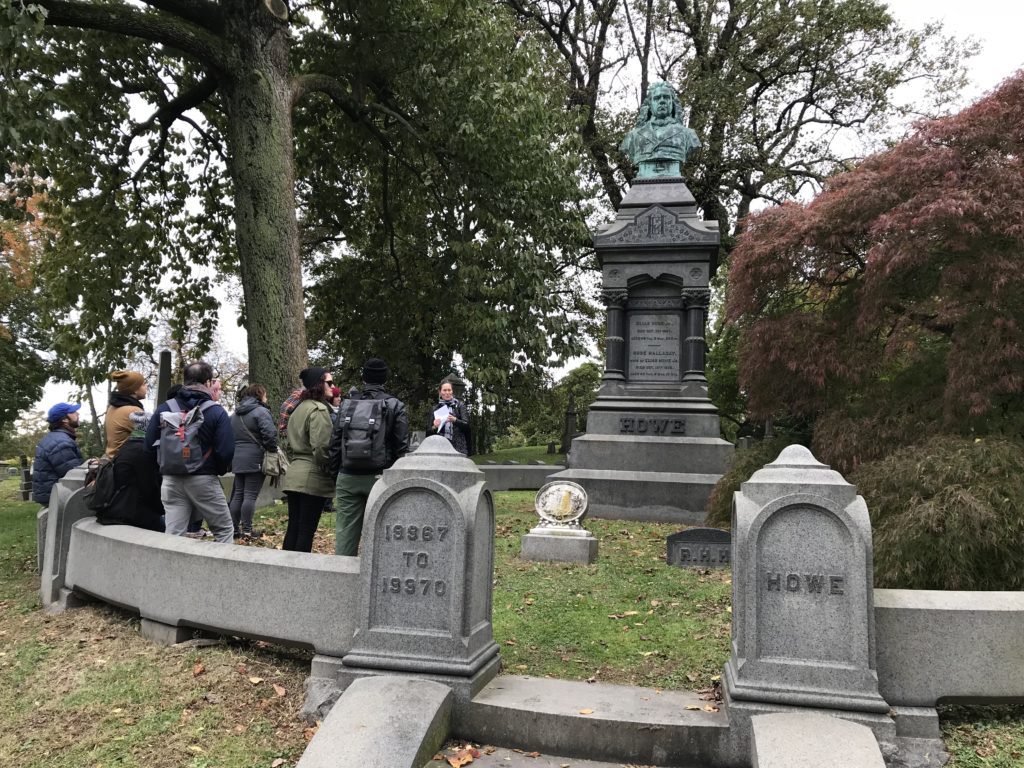
Andrea Janes of Boroughs of the Dead discusses the mediumship of Mary Howe. Photo by Marc Hartzman.
At the Elias Howe, Jr. monument (Howe invented the lockstitch sewing machine), Janes tells the story of his sister, Mary. Like Fancher, she went into trances and sometimes helped visitors chat with the dead, or sometimes just remained in her mysterious sleep and did nothing. But when Howe went into a spell for two weeks, people began to wonder if maybe she had died. Town officials and nearby cemeteries refused to have her buried, so her doctors finally did the deed. Whether she was truly dead or not remains unknown.
Of course, all of these mediums had plenty of naysayers. Many of them were stage magicians who knew all their tricks and were not at all pleased with the fact that mediums deceived people and took their money. So they fought back by exposing their secrets. Washington Irving Bishop, a magician and mentalist made them available to all in an 1880 book called Second Sight Explained.
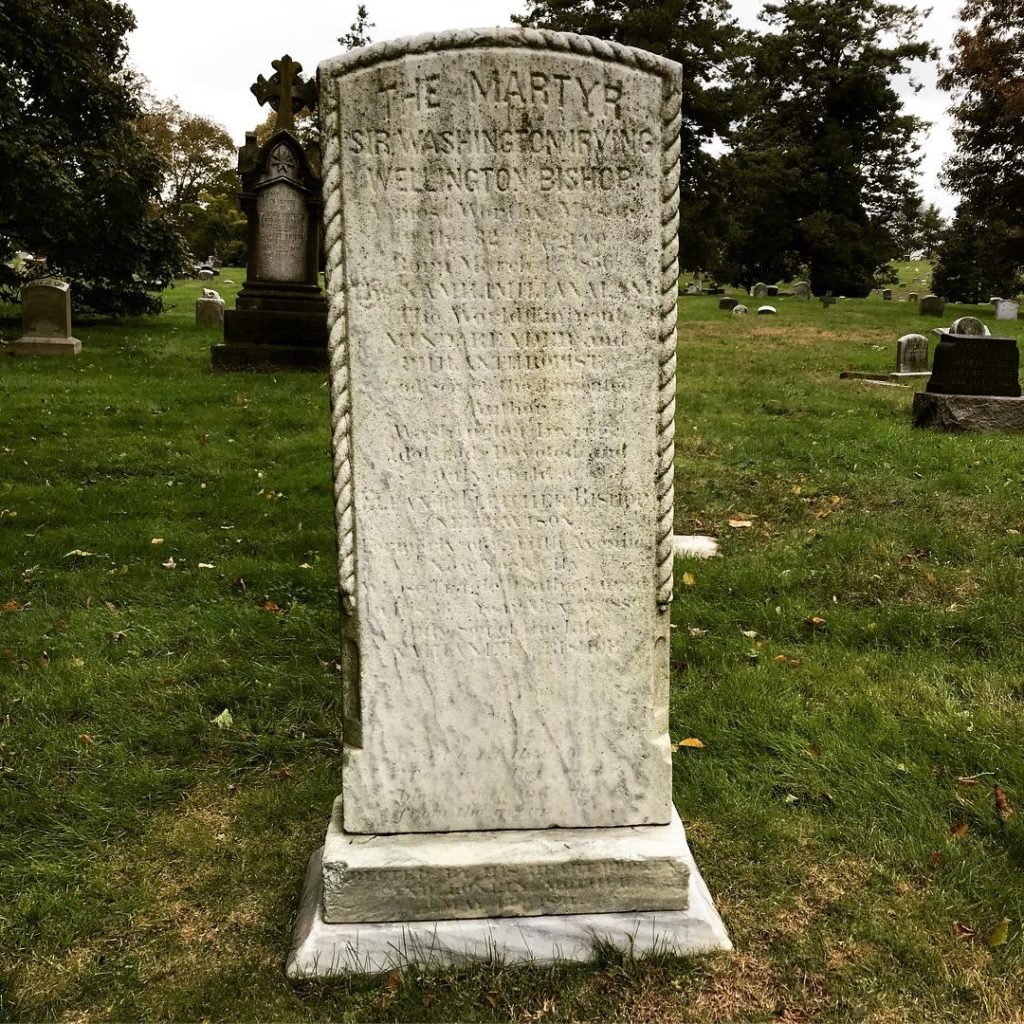
Boroughs of the Dead will introduce you to Washington Irving Bishop, the man who died during his own autopsy. Photo by Marc Hartzman.
Sadly, Bishop arrived at Green-Wood too early—at the young age of 34. The performer suffered from catalepsy, meaning he’d occasionally slip into a trance and appear dead. He carried a card in his pocket to alert anyone examining his seemingly lifeless body that he was likely in a trance. During a show in Manhattan one evening, he suffered a cataleptic spell but quickly recovered. Then it happened again. This time, he didn’t have a quick recovery. The next day he appeared to remain asleep and a group of over-eager physicians performed an autopsy on him. If he wasn’t dead, he was now.
Bishop’s mother and wife were outraged and accused the physicians of murder. Charges were filed, but the case ended in a hung jury.
Janes has not personally seen a ghost, but she has at times sensed them. “I have at times felt certain vibrations or energy in haunted places and have even experienced the sensation of something touching or plucking my skin,” she said.
But Janes has noticed that when the dead appear to communicate, they don’t seem to have much substantive information to convey.
“Henry Ward Beecher apparently only ever talked about an old, rare coin, when his spirit once appeared to a friend—a reference that was apparently meaningless,” she said. “Ghosts tend to say random things like, ‘You should have come when the melons are in season’ more often than not. So yes, I do think they can communicate, sometimes, but I wouldn’t depend on them for stock market advice.”
Though you very likely won’t see any ghosts of the mediums who claimed to speak to the dead, as Janes tells their stories throughout the two-hour tour you’ll surely feel them haunting your mind. Even if just for a moment.
Boroughs of the Dead: Macabre New York City Walking Tours offers many events throughout New York City, including the new Spiritualists and Magicians of NoHo. Book an upcoming tour here.


